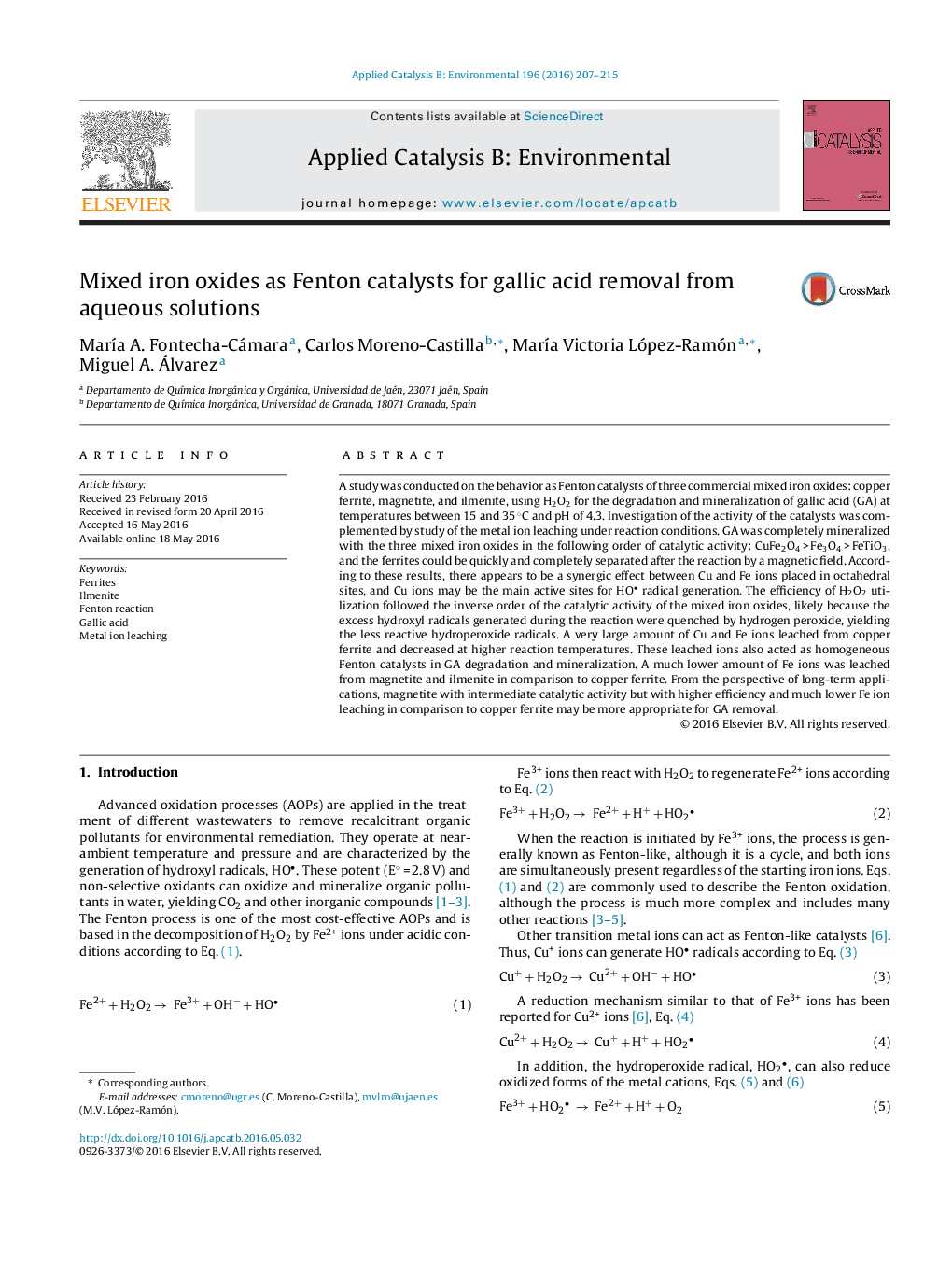| Article ID | Journal | Published Year | Pages | File Type |
|---|---|---|---|---|
| 44986 | Applied Catalysis B: Environmental | 2016 | 9 Pages |
•CuFe2O4, Fe2O3 and FeTiO3 are compared as Fenton catalysts to remove gallic acid.•Activity increases with temperature and follows the order FeTiO3 < Fe2O3 < CuFe2O4.•In CuFe2O4 there appears to be a synergic effect between octahedral Fe and Cu ions.•Efficiency of H2O2 utilization increases in the order CuFe2O4 < Fe2O3 < FeTiO3.•CuFe2O4 shows the highest metal ion leaching, decreasing as temperature increases.
A study was conducted on the behavior as Fenton catalysts of three commercial mixed iron oxides: copper ferrite, magnetite, and ilmenite, using H2O2 for the degradation and mineralization of gallic acid (GA) at temperatures between 15 and 35 °C and pH of 4.3. Investigation of the activity of the catalysts was complemented by study of the metal ion leaching under reaction conditions. GA was completely mineralized with the three mixed iron oxides in the following order of catalytic activity: CuFe2O4 > Fe3O4 > FeTiO3, and the ferrites could be quickly and completely separated after the reaction by a magnetic field. According to these results, there appears to be a synergic effect between Cu and Fe ions placed in octahedral sites, and Cu ions may be the main active sites for HO radical generation. The efficiency of H2O2 utilization followed the inverse order of the catalytic activity of the mixed iron oxides, likely because the excess hydroxyl radicals generated during the reaction were quenched by hydrogen peroxide, yielding the less reactive hydroperoxide radicals. A very large amount of Cu and Fe ions leached from copper ferrite and decreased at higher reaction temperatures. These leached ions also acted as homogeneous Fenton catalysts in GA degradation and mineralization. A much lower amount of Fe ions was leached from magnetite and ilmenite in comparison to copper ferrite. From the perspective of long-term applications, magnetite with intermediate catalytic activity but with higher efficiency and much lower Fe ion leaching in comparison to copper ferrite may be more appropriate for GA removal.
Graphical abstractFigure optionsDownload full-size imageDownload as PowerPoint slide
